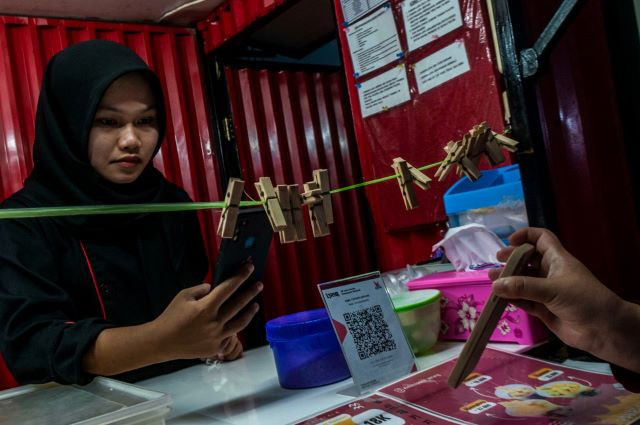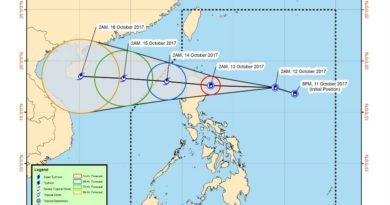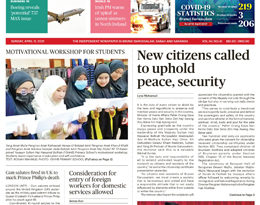OP ED- OPINION | ACADEMIA- ASEAN economy cannot afford business as usual
Digital society: A customer settles a transaction using the Quick Response Indonesian Standard (QRIS) code in Rangkasbitung, Banten, on May 3, 2023. Bank Indonesia has recorded a 40 percent growth in the number of users of the digital payment method in Banten from 1.32 million in February 2022 to 1.72 million in February 2023. (Antara/Muhammad Bagus Khoirunas)
Julia Tijaja and Denis Hew

Indonesia’s ASEAN 2023 chairmanship theme “ASEAN Matters: Epicentrum of Growth” recognizes that ASEAN can exert its voice and influence much better with economic heft.
Over the decades, ASEAN has enjoyed relatively high growth. Overall gross domestic product (GDP) contracted by 2.7 percent in 2020 but the economy quickly rebounded by 3.4 percent in the year after. By 2022, ASEAN’s collective GDP stood at US$3.6 trillion, surpassing its pre-pandemic level and allowing it to retain its position as the world’s fifth-largest economy. FDI inflows to the region reached a historic high at almost $225 billion and ASEAN’s trade value exceeded the size of its economy at $3.8 trillion in the same year.

.
In the post-pandemic world, it becomes clear that the polycrisis is here to stay, from climate-related catastrophes, a prolonged war in Ukraine, to escalating supply chain and technology bifurcation given the strategic United States-China rivalry. As uncertainties abound, businesses are refraining from investing in productivity-enhancing measures while governments are facing fiscal and political constraints in undertaking bold reforms toward longer-term growth and competitiveness.
Global economic restructuring driven by technological progress, sustainability imperatives, and the de-risking agenda requires ASEAN to go beyond “business as usual” to survive and thrive.
One area that ASEAN has not sufficiently addressed is productivity. In the customarily trade-centric ASEAN Economic Community (AEC), there is currently no official avenue to discuss productivity issues. Amid exciting new initiatives, such as digital transformation and green transition, this core agenda is at risk of being pushed further onto the back burner.
Productivity is broadly defined as the efficiency of an economy in utilizing available resources to produce goods and services. It is often measured in terms of capital productivity, labor productivity, and total factor productivity (TFP), which captures technological progress.

.
According to the Asian Productivity Organization, over the past decade, ASEAN’s TFP has on average contracted by 0.6 percent annually; for the past two decades TFP accounted for only 3 percent of annual economic growth. These figures may indicate that many ASEAN countries have limited innovation and R&D capacity, hampering their move up the technological ladder.
Given rising uncertainties, ASEAN economies can no longer rely exclusively on low labor costs and resource endowments. With demographic dividends in gradual decline and as ASEAN slowly depletes its resource-based comparative advantages, it also needs to redouble efforts on improving productivity to escape the middle-income trap of stagnant growth and declining competitiveness.
Some barriers to productivity may be country- and industry-specific but there are areas in which ASEAN can focus and cooperate at the regional level. This article does not propose the creation of yet another framework or strategy, but rather renewed efforts to boost the region’s productivity in a few key areas.
First, the region needs to improve its infrastructure and connectivity. A high-cost economy with poor infrastructure and connectivity will yield sub-optimal outputs. Strengthening digital connectivity should be a priority but physical infrastructure and connectivity also require attention in most of the region. The ASEAN connectivity agenda must be geared toward supporting market integration and supply chain development.
Second, ASEAN should promote and facilitate services sector development. Long perceived as less productive due to their low value-added and nontradability, services now account for the largest sector FDI destination and source of employment in the region. Digitally enabled intermediate services comprise the biggest increase in services trade, many of which are utilized as intermediate inputs.
Services, especially digitally enabled services, are a new growth driver that will boost productivity and competitiveness across economic sectors. An ASEAN services agenda that focuses on building services sector competitiveness through the provision of enablers, such as infrastructure (both hard and soft), regulatory cooperation, and skills development and mobility, can further unleash the services sector’s potential contribution to growth.

.
Third, ASEAN can foster institutional and regulatory interoperability, including alignment between national policy and practice and regional commitments, reducing the costs of cross-border transactions. Enforcement can be strengthened with an effective stakeholder feedback mechanism, results-based monitoring, and stronger political will.
Fourth and directly linked to TFP, ASEAN should leverage innovation and technology to boost productivity. ASEAN needs to mainstream innovation and technology across areas of cooperation, not as a standalone agenda. Initiatives to de-risk innovation, promote research and development, technology application, and address the skills gap should be encouraged. This includes fostering collaboration among the private sector, public sector, and the research community, to promote the application of technology and innovation to different sectors, as well as securing access to technologies, financing, and markets. ASEAN should also improve skills mobility in science, engineering, and technologies, including artificial intelligence (AI).
Lastly, we must invest in our people. In the coming decades, the region’s demographic dividends will decline as more countries face aging populations and shrinking labor markets. Greater inclusion of women, youth, rural populations and the differently abled in the region’s labor force is needed. That workforce also needs to be equipped with good health, high quality and market-informed training and education, and given access to competitive labor markets and social protection.

.
The need for reskilling has become more urgent post-pandemic, as companies accelerate the use of digital technologies and AI adoption. To address the skills gap in the region, skills mobility needs to be better facilitated and calibrated to minimize labor market mismatches. Investment in skills development and training should be redoubled to meet evolving demand.
ASEAN is formulating its post-2025 economic agenda in a markedly different global and regional landscape. Its economies can no longer compete based on resource endowments or low-cost labor alone. New growth drivers are needed to produce and compete in higher value-added goods and services.
Against this backdrop, it is a propitious time for a renewed conversation about productivity. Without further adding to ASEAN’s myriad of existing bodies, the Association may consider having an agile public-private network on productivity, technology, and innovation, bringing together industry experts, researchers, and policymakers – including their national productivity agencies – to discuss issues and identify potential collaborations. Implementation does not need to start from scratch and can leverage existing ASEAN initiatives or be followed up on by relevant economies and private sector or international partners. Stepping up regional efforts to boost productivity will not be easy but ‘business as usual’ is not an option for securing ASEAN’s economic future.
***
Julia Tijaja is an associate senior fellow at the ISEAS-Yusof Ishak Institute. Denis Hew is a senior research fellow at the Centre on Asia and Globalisation, Lee Kuan Yew School of Public Policy, National University of Singapore. The original article was published by ISEAS-Yusof Ishak Institute as an ASEANFocus+ article on Fulcrum blogsite.
Singapore ● Sat, August 19, 2023



 Memento Maxima Digital Marketing
Memento Maxima Digital Marketing






